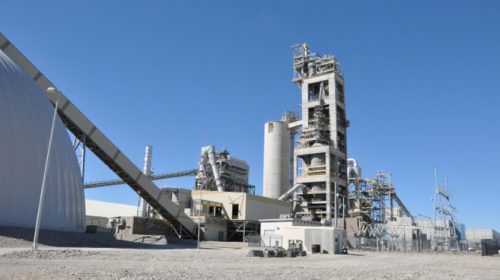U.S. cement manufacturers have ample production capacity to meet demand from infrastructure revitalization efforts the Trump Administration and Congress are contemplating, a Portland Cement Association analysis finds. The industry is operating at roughly 79 percent of capacity, estimated at 108 million metric tons per year; coupled with terminal storage and transfer capabilities, PCA estimates, it is capable of supplying more than 150 million metric tons annually.
Taking into account specific proposed infrastructure projects and known economic drivers—including projects aimed at restoring the nation’s highways, waterways, pipelines, runways and even a potential border wall—the association figures that the U.S. cement industry would have more than enough capacity to meet even the most challenging infrastructure revitalization program.
|
|
| GCC of America Pueblo plant |
“America’s infrastructure is built with cement and concrete because it has to be safe, resilient and long lasting,” says PCA CEO James Toscas. “Revitalizing it will require more cement and concrete, and America can be confident our industry is ready to meet the challenge. Cement companies have made significant investments to increase capacity, productivity, and energy efficiency. Those investments and innovations will pay off as the industry is called upon to support the infrastructure revival our country so desperately needs.”
After adding 1.3 million metric tons of capacity in 2016, domestic cement producers have announced expansion plans that could result in an additional 1.6 million metric tons of capacity by 2018.
Concurrent with the PCA plant census update, Slag Cement Association members reported a 12 percent year-over-year gain in 2016 shipments, totaling about 2.7 million tons. They credit the jump to construction activity amid an improving economy; concrete producers’ realization of the binding efficiencies the material brings; and, increased understanding of slag cement’s potential in concrete among design, specification and construction professionals.
